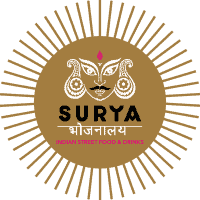For a second. It is not that the doshas are not important, but it would be wrong to follow lifestyle guidelines purely based on one of the doshas. I will explain to you why.
You see, I would like you to work with the qualities rather than just keeping the doshas in mind. Ayurveda is becoming more and more popular in our Western society, which is a great thing. Different websites and practitioners – including myself – now offer online quizzes to find out your predominant dosha. Of course, the dosha test can give you a good indication, when set up correctly. But your prakruti, – your ayurvedic constitution – is far more important.
Your ayurvedic constitution is composed of Vata, Pitta and Kapha in different proportions (you could refer to percentages if that is easier). This constitution was determined for life when your parents conceived you, and health-wise you respond one way or the other, according to your living environment, habits and the life phase you are in. What changes your state of wellbeing is your vikruti, the difference in levels of presence of those doshas compared to your natural state. If your prakruti is V60/P30/K10 and your vikruti is V85/P10/K5, then we know we need to work lowering your subtle qualities, while increasing your fire element.
There are three phases of life where each dosha is predominant:
- Kapha > Childhood, until about age 15
- Pitta > From puberty to around 45-50 years
- Vata > From 50 onwards
Adapt to your surroundings
Even the 6 seasons according to Ayurveda are divided by predominance of doshas, and so are the times of the day. While it is important to take this into account when creating your individual routines, you also need to be able to think of how your direct environment is of influence: do you live in a country where there is a lot of rain and wind all-year round (while I write this, it is warm and sunny in Amsterdam J), meaning it is predominantly Vata but also has Kapha qualities, while your predominant dosha is Vata? Then you will need to look at the qualities of Vata. This dosha is light, cold, dry, rough, subtle and clear. So as you will understand, as a Vata predominant type, windy weather will affect you and you will need to work with the opposite qualities by keeping a scarf or an extra sweater in your bag when you are away from home, eat more warm, heavy, oily, liquid and nourishing foods with spices that provide heat (ginger, turmeric, cinnamon, cardamom and many more) and balance the subtleness of Vata. You will also need to become ‘less subtle and mobile’ by eating at the same time every day and avoid skipping meals.
This also means that in every stage of life you need to adjust according to your needs. Babies are chubby and have body tissues to protect them from harsh factors that come from the outside world it is just learning to know for the first time. Body tissue and structure are Kapha, and Kapha is heavy, oily, cold, sticky, solid, soft, gross and static. Snotty noses, bronchitis and asthma are typical ailments that rise during this life phase. But not all children will suffer from it. The ones that are Vata will very unlikely suffer from these three ailments, but due to their dry and subtle qualities, they might be less resistant to chilly weather and feel weak and sick more often, whereas Pitta children – especially if their fire element is stronger than their water element – are very resistant to the cold, and they might even find it enjoyable with the heat they’ve got inside.
I have just given you a few examples of qualities, which is the ideal way to work with food, exercise and general lifestyle habits. It is also the way to go to understand health issues. If you want to know more about this, don’t forget to sign up for my newsletter. For questions, also feel free to drop me an e-mail.
Below you find a table with the 20 qualities called the Theory of Samanya – Vishesha, and an indication on whether they increase or decrease a certain dosha or agni (your digestive fire).
| Heavy (Guru): +K, -V, -P, -A | Light (Laghu): +V, +P, +A, -K |
| Slow (Manda): + K, -V, -P | Treble/Agudo (Tikshna): +V, +P, -K |
| Cold (Sheeta): +V, -P | Hot (Ushna): +P, +A, -K, -V |
| Oily (Snigdha): +K, -V, -P, -A | Dry (Rukshna): +V, -K |
| Silky (Shlakshna): +P, +K | Rough (Khara): +V, +A |
| Solid/Dense (Sandra): +K, -V, -P, -A | Liquid (Drava): +P, +K, -V, -A |
| Soft (Mridu): +K, -V, -P, -A | Hard (Kathina): -K |
| Static/Stable (Sthira): +K, -V, -P | Mobile (Sara): +V, +P, +A, -K |
| Gross (Sthula): +K, -V, -P, -A | Subtle (Sukshma): +V, +P, +A, -K |
| Sticky (Picchila): +K, -V, -P, -A | Clear (Vishada): +V, +P, +A, -K |







